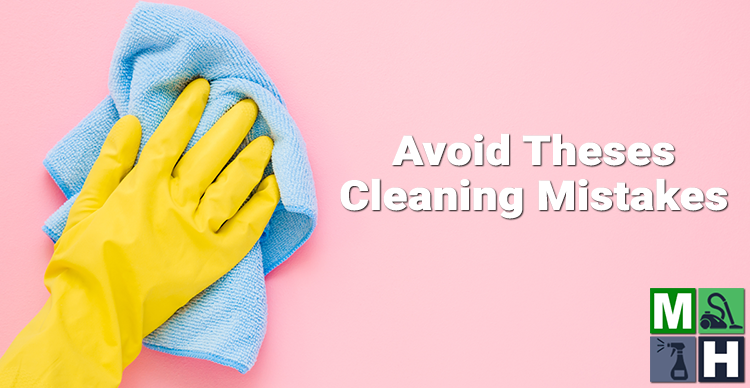
Cleaning house is a fact of life. It takes time and care to get the job done properly. Sometimes people, through no fault of their own, make cleaning mistakes that waste time and can make your house dirtier than when you started. Let’s look at some of the most common ones.
Use A Microfiber Cloth to Clean Your House
As you clean your house, traveling from room to room, your cleaning rag is taking the bathroom germs into the living room and kitchen. The dirt and grime from the living room is transferred to the kitchen, and so on.
Cleaning experts suggest that you purchase microfiber cloths in a variety of colors so that it’s easy to assign one color to each room. Throw them in the washing machine when you’re done, and they’ll be ready to go the next time you clean.
Avoid Using a Feather Duster
Although the advertisements say that their feather duster will trap and keep the dust, it’s just not true. A feather duster will move the dirt around, but spreading the dust wasn’t what you had in mind, I’m sure.
Don’t Spray Cleaning Products on Dirty Surfaces
If you spray cleaning products directly on the area to be cleaned, you may be causing a build-up of the products you are using, and creating a dirty and greasy film, to which dirt is more likely to adhere. Spray your cleaning product on your microfiber cloth and use the cloth to clean.
Focus on Cleaning the Kitchen
I think we can all agree; our kitchens can become quite dirty from time to time. It’s essential to clean your kitchen correctly and regularly so that bacteria and odors don’t have an environment in which to become a nuisance.
Don’t Forget to Clean the Sink
Most of the time, we clean the dishes and move on to the next task. Forgetting to clean your sink will allow bacteria to build up. After you have finished washing the dishes, wipe down the sink with a microfiber cloth, and treat the drain once a week by pouring baking soda down it, to absorb odors and kill germs.
That Nasty Kitchen Sponge
When you use that nasty sponge to clean your kitchen, you are making it dirtier and spreading germs and bacteria everywhere. For kitchen cleaning projects that require more scrubbing than a microfiber cloth can give, go ahead and use that sponge, but at least once a week, throw it in the dishwasher so that it can get cleaned at high heat and sanitized.
What About Cleaning Your Cutting Board?
Don’t assume that because you wiped your cutting board down with dish soap and your sponge that it’s clean. You can’t see or notice bacteria in the cuts that have been made on the surface of the cutting board. This fact applies to wooden and plastic cutting boards.
You won’t want to put them in the dishwasher… the heat may warp them. Instead, give them a soak in diluted bleach, or hydrogen peroxide. Then rinse them with water and let them dry completely before you put them away.
Let’s Clean the Germy Bathroom
Keeping your toilet clean and fresh, but we’ve got a few tips to help you there. Take your time and be thorough when you clean your bathroom. Remember to use a microfiber cloth where you can, and put it in the washing machine when you’re finished cleaning the bathroom.
Don’t Put Your Toilet Brush Away When It’s Wet
Once your toilet brush is done giving your toilet a thorough clean, rinse it with clean, clear water. Allow it to dry before you put it away so that bacteria won’t have a damp place to grow.
We hope these guidelines help to answer some of your cleaning questions. If you need help with cleaning your home the right way, contact us at Maid Healthy today! We use all-natural, green cleaning products to keep your home clean and safe for your family.

